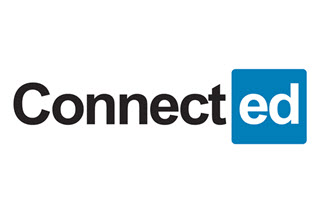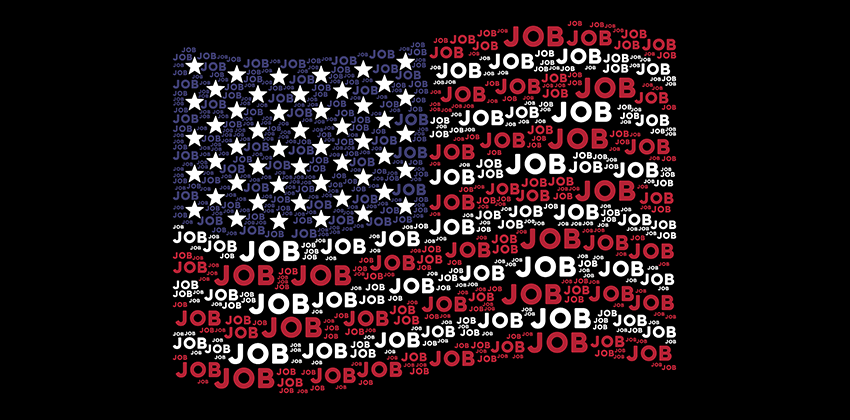
 Recently, I’ve been very happy to see transitioning military members using LinkedIn for their job search, as much as a year in advance of their separation.
Recently, I’ve been very happy to see transitioning military members using LinkedIn for their job search, as much as a year in advance of their separation.
This is an advantage civilians don’t have – civilian employers can get very cranky if they think an employee is job hunting.
I’m very happy to see LinkedIn participation increasing for transitioning military because LinkedIn is extremely important to 21st century job search, even if you aren’t planning to separate for 5 years.
And starting a year in advance (even a few weeks in advance) is an excellent idea!
LinkedIn offers FREE LinkedIn Premium accounts for one-year to military members in transition, veterans, and spouses (after a PCS or retirement/transition of the member). Don’t waste this benefit—wait until your Profile is complete and you are less than 6 months from transition.
I have seen some mistakes that are making the job search process last much longer than it needs to last. But these mistakes are not difficult to fix, and the payoff is huge.
1. Determine the job(s) you want in the civilian job market.
You can’t successful hit your target if you don’t have one. That applies to job search and, particularly, to LinkedIn Profiles and activity.
So, your first task is to start figuring out what you want to do and where you want to do it.
Focus on 2 or 3 job titles. O*Net is very useful.
An extremely helpful book, which has been a best-seller for over 30 years because it IS so good, is “What Color Is Your Parachute?“ by Richard N. Bolles. Buy or borrow a copy, and do all the exercises. You’ll find it extremely helpful.
Then, head back to the Career Changers Guide and O*Net for more detailed job descriptions to pick out the job titles of the jobs you want.
DO NOT KEEP YOUR “OPTIONS OPEN.” Just like in combat or any other project you undertake, you must have a specific mission or target that you are aiming for, or you’ll end up with nothing useful.
Keeping your options open is a recipe for a very long job search with time wasted going off into unproductive dead ends. Your LinkedIn Profile and resumes will contain fewer “keywords” — the essential terms recruiters and employers use when they are searching for qualified job candidates.
Trust me, very, VERY few recruiters are searching for a “an experienced logistics professional!.” Instead, if they have a logistical jobs to fill, they are looking for people with the specific logistics skills and accomplishments required by the job they are filling.
For more information about keywords, read LinkedIn SEO, The 25 Best Keywords for You in Your Job Search, and Personal SEO (which includes How Top ATS Systems Analyze Resumes).
2. Leverage your LinkedIn Headline.
Your LinkedIn “Professional Headline” is the one-sentence description of you that appears below your name on your Profile.
Your Professional Headline appears with your name and photo in everything you do in LinkedIn (make a comment, start a discussion, send an invitation to connect, etc.).
LinkedIn named it your “Professional Headline” – not your job title and not your current status (particularly if your current status is “unemployed”)! So, think “HEADLINE!”
Yes, you may currently be “Platoon Sergeant at US Army” or “Junior Officer at US Navy” right now. But, while accurate, those are pretty useless Professional Headlines. Few civilian recruiters will be searching for people with those job titles (although some will). And very few civilians will be able to translate those phrases into what job you might want, even a civilian who is a veteran.
So, make it very clear to them, like this, for example –
Old: Platoon Sergeant at US Army
New: Army Sergeant, operational manager of 40, seeking a position as facilities supervisor for a large healthcare complex.
Old: Junior Officer at US Navy
New: Navy Lieutenant, manager of 40 logistics workers, seeking a position as supply chain management consultant.
Or, [military title], seeking a position as [whatever you want to do next].
LinkedIn gives you 120 characters, spaces, and punctuation. Use as many of them as possible. Don’t be modest, and don’t expect civilians to understand the difference between a platoon and a battalion or a squad and a squadron.
Read Maximize Your LinkedIn Profile Professional Headline for more details. It is a key element in an effective and successful LinkedIn Profile.
3. Focus your LinkedIn Profile on your future, not your past!
Job-Hunt’s Resume Expert Susan Ireland tells job seekers that their resumes are about their future, not their past, and she recommends that you take the same approach with your LinkedIn Profile. Focus on what you want to do next!
You don’t need to describe everything you did in the service.
Your LinkedIn Profile is not a catalog of your work history. Your LinkedIn Profile IS a marketing flyer for your job search!
If you’re like that Army sergeant who wants to be a facilities supervisor at a large health care facility, go through your resume and pick out every facilities-management-related responsibility, experience, skills, accomplishments, tasks, and training classes completed successfully. Then, put as many of those in your LinkedIn Profile as you can fit, starting with the most relevant and impressive.
The Navy lieutenant would look at his or her background and pick out the things (responsibility, experience, skill, etc. as with the sergeant) that would show the potential target employers that the lieutenant has the experience and skills (etc.) needed by a supply chain consultant. Then, that relevant information would be included in the lieutenant’s LinkedIn Profile.
4. Don’t worry about your rank, unless you’ve achieved a very high rank or achieved high rank at a very young age.
In general (pun intended), most civilians don’t understand military rank structures. “Generals” and admirals” are recognizable as very senior, but everyone else is just kind of a fog (have you noticed that the media thinks everyone who is in service is a “soldier”?).
I’ve recently seen recommendations to leave your rank completely off your resume and, I assume, your LinkedIn Profile as well. Given the lack of understanding it may not be a bad idea, but I don’t recommend completely eliminating your rank from either your LinkedIn Profile or your resume.
Because your resume may be viewed by a veteran or someone who does understand military ranks, people who understand the rank structure will wonder why it is missing. They may wonder what you are hiding by not including any reference.
So, do a brief reference, e.g. “Honorable Discharge as an E-5” (or whatever you were), in your LinkedIn Summary. Be sure to include the Honorable Discharge, assuming that’s what you received. If you did not receive an Honorable Discharge, I would just say – “Rank at discharge: E-5” (or whatever) or “Rank at separation: E-5” (as appropriate).
Stick with your classification code as E-# or O-# (for the people who know/care) without the official title or classification. Since about 90% of the civilian world doesn’t know a corporal from a colonel, describing yourself as a “staff sergeant,” “first class petty officer,” or even a generic term like “junior officer” will make no sense to them. And that confusion may hurt your job search – the titles “junior officer” and “petty officer” sound like very light-weight jobs to civilians.
“Junior” members of the military usually have much greater responsibility and authority than civilians of the same age (and older).
Don’t take the risk of being underestimated.
5. Profiles must have a headshot photo — as a civilian.
Profiles without photos are ignored, assumed to be clueless or, worse, fake.
And, nothing says I-don’t-want-to-leave-the-service to a civilian like a photo of you in your uniform. Get a good headshot photo taken (or take it yourself) with you in “business dress” — no friends, family, pets, or others in the photo.
BTW, I recommend avoiding references to clearances in social media.
BEST OPTION: Guidance varies depending on branch of service and level of clearance. Contact your security manager for guidance.
Generally, it is best to err on the side of caution. Yes, job candidates who have qualified for clearances may be sought by certain employers, but LinkedIn is very public to many different employers in many different countries.
You can probably make it clear that you had clearances in your unclassified descriptions of your jobs and accomplishments in your LinkedIn Profile. But, don’t list your clearances, especially the classified ones, in your LinkedIn Profile or elsewhere in social media.
On the other hand, when you are submitting a resume to a specific opportunity that requires a certain level of clearance, you can certainly indicate that you held/hold that clearance, meeting the requirements of that specific job opportunity.
Bottom Line on LinkedIn Tips for Your Civilian Job Search
LinkedIn is where you need to be for your civilian job search, and I’m very happy to see more and more transitioning military members appearing in my LinkedIn Job-Hunt Help Group. Just remember to (1.) focus on your future and (2.) highlight your military experience as it relates to your target civilian job in language that civilians can understand.
More Tips for Transitioning Military:
- Guide to Job Search for Veterans
- Guide to Personal Branding with LinkedIn
- 10 Elements of an Effective LinkedIn Profile
- 12 Steps to Outrank Your Competitors in LinkedIn Search in 2020 (Personal LinkedIn SEO)
- Secret to Powerful LinkedIn Profile SEO: Leverage Skills & Endorsements
- The 25 Best Keywords for You in Your Job Search
- How to Double (or Triple) Your LinkedIn Visitor Traffic with the Right Keywords
- 4 LinkedIn Ice Breakers
- FREE eBook: Smart Personal Branding with LinkedIn
 About the author…
About the author…
Online job search expert Susan P. Joyce has been observing the online job search world and teaching online job search skills since 1995. A veteran of the United States Marine Corps and a recent Visiting Scholar at the MIT Sloan School of Management, Susan is a two-time layoff “graduate” who has worked in human resources at Harvard University and in a compensation consulting firm. Since 1998, Susan has been editor and publisher of Job-Hunt.org. Follow Susan on Twitter at @jobhuntorg and on Facebook, LinkedIn.
More about this author…
Don't forget to share this article with friends!




